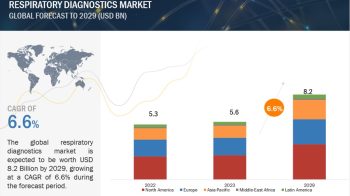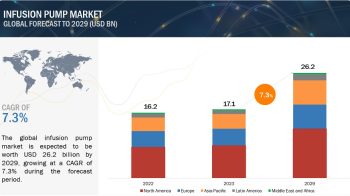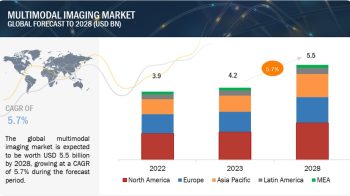Covid-19 impact on the global Brain Monitoring market
As of October 12, 2021, more than 239.1 million confirmed cases have been reported across the world (Source: Worldometers). The SARS-COV-2 (the cause of COVID-19) particularly affects the respiratory system; very few neurological symptoms have been reported with respect to COVID-19.
The state of urgency to combat the outbreak has led to a significant increase in the demand for remote monitoring and patient engagement solutions. Most of the hospitals/healthcare facilities are currently trying to expand patient monitoring to home care settings or other temporary setups with an aim to provide optimal care. COVID-19 has led to a significant surge in demand for ventilators, and manufacturers are currently focusing their efforts to meet the increasing need for ventilators, including other respiratory devices, in contrast to brain monitoring devices.
The pandemic is likely to have an adverse impact on the brain monitoring business, particularly due to the focus of hospitals on setting up COVID-19 specific ICUs, along with the temporary suspension of production and manufacturing sites in major affected regions across the globe.
Download PDF Brochure@
https://www.marketsandmarkets.com/pdfdownloadNew.asp?id=909
Brain Monitoring Market Dynamics
Driver: Increasing incidence and prevalence of neurological disorders
The global incidence and prevalence of neurological disorders, such as dementia, epilepsy, Parkinson’s disease, Huntington’s disease, headache disorders, multiple sclerosis, neuro infections, stroke, and cerebral palsy, have increased significantly over the years. Brain disorders, which include a combination of developmental, psychiatric, and neurodegenerative diseases, are a growing cause of morbidity across the globe.
This can primarily be attributed to the growing geriatric population (by 2050, more than 20% of the global population is expected to be aged over 65 years). The American Medical Association (AMA) estimates that at least 60% of individuals aged 65 years and above will be living with more than one chronic condition by 2030. Mentioned below are some important statistics related to the incidence and prevalence of neurological disorders:
# According to WHO data, as of September 2019, around 50 million people are affected by dementia globally, with nearly 10 million new cases registered each year. It is one of the major causes of disability and dependency among older people worldwide.
# According to WHO data, in June 2019, globally, the number of people affected with epilepsy was approximately 50 million; of this, nearly 80% live in low- and middle-income countries.
# The average incidence of epilepsy each year in the US is estimated at 150,000 or 48 for every 100,000 people (Source: Epilepsy Foundation). In the US, around 3.4 million people are affected by epilepsy.
The rising incidence of these neurological disorders has made it extremely important to monitor brain and neurological functions. Many neurological disorders and conditions are progressive, and their risk increases with age. Additionally, the prevalence of other diseases and conditions, such as sickle-cell diseases and cardiac disorders, is also increasing. Cardiac procedures may sometimes affect the normal functioning of the brain, which is another major factor driving the demand for brain monitoring devices.
Restraint: Research High cost of complex brain monitoring procedures and devices
The high cost of brain monitoring surgeries and devices is a major factor restraining the global brain monitoring market, especially in developing countries with poor reimbursement policies. Brain monitoring devices are highly complex, and the procedures involving the use of these devices are generally expensive. For instance, the average cost of a standard EEG is ~USD 200–700; this procedure can cost as high as USD 3,000 for extended monitoring.
A dual-channel TCD costs approximately USD 3,000–3,200, and an ICP monitor costs approximately USD 340–500. Likewise, a single MEG system costs roughly USD 2.5–3 million. Due to the high price, healthcare facilities, even in countries that show wide adoption of high-tech medical equipment, find it difficult to procure MEG devices. Additionally, the maintenance cost and other associated indirect expenses increase the total cost of ownership of these devices, thereby limiting their adoption.
Small hospitals and standalone ASCs are also less inclined toward investing in costly and sophisticated technologies due to budgetary constraints; this is more prominent in developing countries. Owing to the high cost of these procedures, coupled with the poor reimbursement scenario, a very limited pool of patients in developing countries can afford neurological treatments. As a result, healthcare facilities are reluctant to invest in new or technologically advanced systems, thus limiting the brain monitoring market.
Request Sample Pages@
https://www.marketsandmarkets.com/requestsampleNew.asp?id=909
Opportunity: The increasing demand for non-invasive and minimally invasive devices
Invasive monitoring is a complex, painful, and risky process, as it involves direct intervention with sensitive brain tissue. Doctors and patients, therefore, show a high inclination toward the use of non-invasive or minimally invasive brain monitoring devices. Owing to their advantages, there has been a rapid increase in the demand for non-invasive ICP monitors, TCD devices, tympanic membrane displacement procedures, optic nerve sheath diameter, CT scan/MRI, and fundoscopy, which are reliable alternatives to invasive techniques, thus compelling players in this market to develop and commercialize such products.
In March 2019, Masimo (US) received CE Mark approval for its next-generation SedLine brain function monitor for pediatric patients aged between one and 18 years of age; this product assesses the brain function while the patient is under anesthesia.


